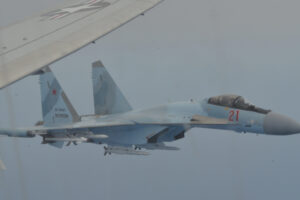JRL NEWSWATCH: “Understanding Russian Coercive Signaling” – RAND

“Research Questions
1. What are the primary drivers of Russia’s coercive signaling behavior?
2. Are there trends or patterns in this behavior?
3. How do Russian military strategists think about signaling?
4. How can the United States best interpret future Russian actions?
Moscow regularly uses limited military actions — far short of direct aggression but often creating escalatory risks — that have caused concern and consternation …. It is … far from clear what Russia intends to signal …. Different understandings of Moscow’s objectives could lead to dramatically divergent interpretations …. [T]his report analyze[s] these activities over recent years to provide a better understanding of the drivers of Moscow’s behavior and practical guidelines for assessing future events. … posit[ing] several hypotheses regarding Russian motives … using three methods: an examination of Russian strategic writing and leadership statements …, a quantitative modeling effort, and qualitative case studies ….”
Click here for: “Understanding Russian Coercive Signaling” – RAND/ Samuel Charap, Andrew Stravers, John J. Drennan, Dara Massicot, Sean M. Zeigler, Gregory Weider Fauerbach, Mark Stalczynski, Melissa Shostak
